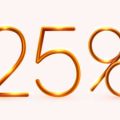1. Understanding the Basics of Palmistry
Palmistry, also known as chiromancy or palm reading, is an ancient practice that has fascinated people for centuries. It involves studying the lines, shapes, and mounts of the hands to gain insights into a person’s character, potential, and even career path. But how did this art form make its way into modern American culture, and why do so many people still turn to it for guidance today?
The Origins of Palmistry
Palmistry originated thousands of years ago in India and spread through China, Egypt, and Greece. Over time, each culture added its own interpretations and techniques. Today, palmistry has evolved into a blend of tradition and modern insight, especially in the United States where it’s often used for personal growth rather than fortune-telling.
Key Elements of Palm Reading
Understanding palmistry begins with recognizing the main features found on every hand. Here are the basics:
| Feature | Description |
|---|---|
| Lines | Main lines include the Heart Line (emotions), Head Line (intellect), Life Line (vitality), and Fate Line (career & destiny) |
| Mounts | Raised pads at the base of each finger representing traits like ambition (Mount of Jupiter) or creativity (Mount of Apollo) |
| Hand Shape | The overall shape of your hand can suggest personality types—Earth (practical), Air (communicative), Water (intuitive), Fire (dynamic) |
Palmistry’s Place in Modern American Culture
In today’s America, palmistry isn’t just about predicting the future—it’s about self-discovery. Many Americans explore palm reading as a tool for personal development, career planning, and understanding life’s challenges. It’s common to see palmists at festivals, wellness centers, or even corporate team-building events. People use these insights not only to satisfy curiosity but also to reflect on their strengths and direction in life.
Why Americans Turn to Palmistry for Career Guidance
With career satisfaction being such an important part of well-being in the U.S., more individuals are looking beyond traditional assessments. Palmistry offers a unique perspective by highlighting natural talents and tendencies that may align with certain professions. Whether you’re seeking validation or inspiration for your next move, understanding your hands can be a surprisingly empowering first step.
2. Decoding Key Palm Lines and Their Career Implications
The Major Palm Lines and What They Mean for Your Career
Palmistry, also known as chiromancy, is more than just a fun party trick—many people believe that the lines on your palm can reveal hidden strengths, talents, and even your ideal career path. Let’s break down the three major palm lines most commonly linked to career insights: the Head Line, Fate Line, and Life Line. Understanding these can give you a new perspective on what kind of work may suit you best in the American job market.
Head Line: Your Approach to Problem-Solving
The Head Line runs horizontally across your palm and is all about how you think, learn, and make decisions. In American workplace culture, skills like creative thinking, logical reasoning, and adaptability are highly valued. The qualities of your Head Line can show whether you might thrive in roles requiring innovation, detailed analysis, or strong communication.
| Head Line Type | What It Suggests | Ideal Career Fields |
|---|---|---|
| Long & Deep | Analytical thinker, detail-oriented | Engineering, Law, Research |
| Short & Straight | Practical, action-oriented | Business Management, Sales, Emergency Services |
| Curved or Wavy | Creative, adaptable | Marketing, Arts, Design, Media |
| Forked (like a Y) | Balanced thinker (creative & logical) | Entrepreneurship, Education, Tech Startups |
Fate Line: Your Sense of Purpose and Career Destiny
The Fate Line typically runs from the base of the palm upward toward the middle finger. Not everyone has a clear Fate Line—and that’s okay! If you do have one, it can offer clues about your drive for success and how much your career shapes your life journey. In the U.S., where people often value personal ambition and forging unique paths, this line can point to how much your job will influence your identity.
| Fate Line Feature | What It Suggests About Work Style | Career Implications |
|---|---|---|
| Strong & Straight | Goal-focused, persistent | C-level Executive Roles, Corporate Careers |
| Broken or Faint | Flexible career path; may change jobs often | Freelancing, Consulting, Gig Economy Jobs |
| No Fate Line Visible | Tends to create their own destiny; self-directed | Entrepreneurship, Startups, Creative Professions |
| Doubles or Branches Off | Multiple interests or dual careers possible | Side Hustles, Multidisciplinary Roles (e.g., Writer + Teacher) |
Life Line: Your Energy Level and Work-Life Balance Preferences
The Life Line curves around the base of your thumb. While some believe it predicts lifespan, most modern palmists see it as an indicator of energy levels and resilience—important factors for choosing high-stress versus low-key careers in America’s fast-paced work environment.
| Life Line Quality | Main Strengths & Aptitudes Revealed | Best-Suited Job Types |
|---|---|---|
| Long & Deeply Etched | Loves challenges; energetic; recovers quickly from stress | Surgical Medicine, Law Enforcement, Startups |
| Straight & Shorter | Prefers routine; values security and stability | Bureaucratic Roles, Government Jobs |
| Dramatically Curved | Loves adventure and variety; open to change | Travel Industry, Event Planning |
| Doubles or Chains | Might experience ups and downs; adaptable under pressure | Crisis Counseling, Social Work |
A Quick Reference Table for Palm Lines and Careers in America:
| Palm Line Analyzed | Main Clue About You | Possible Career Matches |
|---|---|---|
| Head Line | Your thinking style | Tech jobs if logical; arts if creative |
| Fate Line | Your ambition level | C-suite if strong; freelance if faint/missing |
| Life Line | Your stamina & balance needs | High-energy roles if deep; steady jobs if straight/shorter |
This breakdown helps you connect what’s literally in the palm of your hand with real-life choices in today’s diverse American job landscape.
![]()
3. Interpreting Mounts and Finger Shapes for Professional Success
In palmistry, the mounts (the padded areas at the base of each finger and the palm) and finger shapes can offer clues about your strengths, personality traits, and ideal career paths. By understanding these features, you can make connections to popular professions in the American job market.
Understanding the Mounts on Your Palm
Each mount is linked to certain characteristics that align with specific career fields. Here’s a quick guide:
| Mount | Location | Key Traits | Matching Careers |
|---|---|---|---|
| Mount of Jupiter | Beneath the index finger | Leadership, ambition, confidence | Management, politics, entrepreneurship, law |
| Mount of Saturn | Beneath the middle finger | Responsibility, practicality, discipline | Engineering, finance, research, project management |
| Mount of Apollo (Sun) | Beneath the ring finger | Creativity, appreciation for arts, optimism | Entertainment, design, marketing, public relations |
| Mount of Mercury | Beneath the pinky finger | Communication skills, adaptability, intelligence | Sales, teaching, journalism, tech support |
| Mount of Venus | The base of the thumb | Passion, sociability, energy | Healthcare, hospitality, social work, fitness coaching |
| Mount of Luna (Moon) | The base of the palm opposite the thumb side | Imagination, intuition, empathy | Counseling, writing, therapy, nonprofit work |
The Significance of Finger Shapes and Lengths
Your fingers also reveal important details about your work style and strengths. In American culture where individuality is valued in career choices, knowing your natural tendencies can help guide your professional journey.
| Finger Shape/Length | Main Traits | U.S. Career Examples |
|---|---|---|
| Long Fingers (relative to palm size) |
Pays attention to detail, analytical thinking, patience |
Data analysis, accounting, research scientist, quality control specialist |
| Short Fingers (relative to palm size) |
Takes action quickly, broad focus, willing to multitask |
Entrepreneurship, sales, emergency services, sports coaching |
| Tapered Fingers (tips are narrower than base) |
Sensitive, diplomatic, aesthetic awareness |
Counselor, wedding planner, fashion designer, singer or musician |
| Straight Fingers | Direct, practical, logical thinking | Coding, logistics coordinator, supply chain manager, law enforcement |
A Quick Way to Check Your Own Hand
You can look at both mounts and finger shapes together for a more complete picture. For example: if you have a strong Mount of Mercury and long fingers, careers involving communication and detail—like editing or tech support—might suit you well. On the other hand, a prominent Mount of Apollo paired with tapered fingers could point toward creative industries like graphic design or media production.
Palmistry as a Fun Self-Discovery Tool for Your Career
Palmistry isn’t just about fortune-telling—it’s about gaining insight into your natural abilities. By connecting what you see on your palm to well-known jobs in America, you can find inspiration for your next professional step. Try comparing your own hands to these descriptions and think about how they match up with your interests or current job.
4. Special Palm Signs to Look For in Career Assessment
When it comes to finding your ideal career path through palmistry, certain rare markings on your palms can offer surprising insights. These special signs—like stars, crosses, or branches—may point to unique talents or potential for specific fields. Let’s break down what these markings mean and how they relate to different career directions.
Common Special Markings and Their Meanings
| Marking | Appearance | What It Might Indicate |
|---|---|---|
| Star | Small lines radiating from a central point, like an asterisk (*) | Natural leadership ability, public recognition, or the potential for sudden success. You might thrive in executive roles, politics, or as an entrepreneur. |
| Cross | Two lines crossing each other (x) | A turning point or significant life event. This marking could suggest a calling toward helping professions, counseling, or jobs that require empathy and guidance. |
| Branch | Lines branching out from a main line (like roots) | Diversified interests and creativity. You may excel in artistic careers, writing, design, or innovation-driven roles. |
| Square | Four lines forming a box shape | A protective sign suggesting stability and security. Good for careers in law enforcement, government, banking, or administration. |
| Island | An oval or loop within a line | Periods of challenge or stress—often found during career transitions. Can also mark resilience and adaptability. |
Where to Find These Signs on Your Palm
The location of these rare markings matters just as much as their shape. Here’s how placement can influence their meaning:
| Palm Area | Career Significance if Marked |
|---|---|
| Mount of Jupiter (below the index finger) | Leadership, ambition, management skills—ideal for bosses, team leaders, or entrepreneurs. |
| Mount of Apollo (below the ring finger) | Talent in creative arts, media, or public-facing roles—great for artists, performers, or influencers. |
| Mount of Mercury (below the pinky) | Communication prowess—perfect for salespeople, marketers, teachers, or writers. |
| Main Lines (Life Line, Head Line, Heart Line) | If special signs appear here, they often indicate key moments or strengths that shape your professional journey. |
How to Use These Clues in Your Career Exploration
If you spot one of these rare markings on your palm—or even more than one!—think about how its meaning matches your interests and experiences so far. For example, a star near your Mount of Jupiter might encourage you to step up into a leadership role at work or start your own business. Meanwhile, creative branches near your Mount of Apollo could push you toward exploring design or performing arts.
The beauty of palmistry is that it offers hints rather than hard rules. Think of these signs as friendly nudges toward areas where you could truly shine in your career journey.
5. Integrating Palmistry Insights with Modern Career Planning
Bridging Ancient Wisdom and Modern Methods
Palmistry, also known as chiromancy, has intrigued people for centuries. But in today’s fast-paced American workplace, you might wonder how reading your palm could possibly help with choosing a career path or improving your work-life balance. The truth is, palmistry doesn’t have to replace modern career counseling or self-assessment tools—instead, it can complement them by offering fresh insights into your personality and potential.
How Palmistry Can Fit Into Your Career Journey
While career counselors use tests like the Myers-Briggs Type Indicator (MBTI) or StrengthsFinder, palmistry offers another perspective by examining the physical markers on your hands. By understanding what your heart line, head line, and life line say about you, you can compare these insights to what you learn from traditional assessments.
Using Palmistry Alongside Traditional Tools
| Traditional Method | Palmistry Insight | How They Work Together |
|---|---|---|
| Personality Tests (e.g., MBTI) | Shape of fingers & lines can reveal introversion or extroversion | Compare test results with hand features for consistency and deeper understanding |
| Career Counseling Sessions | Dominant hand reveals talents and career inclinations | Use palm reading to discuss strengths or hidden talents with your counselor |
| Self-Assessment Journals | Mounts and lines indicate emotional needs and stress triggers | Reflect on how these match up with your real-life experiences at work |
| Work-Life Balance Planning | The state of the life line can show energy levels and stress resilience | Plan routines that align with your natural rhythms suggested by palmistry |
Tips for Americans Navigating Career Changes or Seeking Balance
- Keep an Open Mind: Use palmistry as one of many tools—not as the only answer. Let it spark new ideas about your strengths and passions.
- Share With Your Counselor: If you’re working with a coach or counselor, mention your palmistry findings. This can open up interesting discussions about unexplored skills or fields.
- Check for Alignment: Compare what you see in your hands with what you know about yourself from other sources. When they agree, it’s a good sign you’re on the right track!
- Revisit During Transitions: When facing job changes or burnout, look at your palms again. You may notice new details or patterns that reflect recent growth.
- Cultural Fit Matters: In the U.S., workplace culture is key. Use both practical advice and personal insights to find environments where you’ll thrive—whether remote, hybrid, or in-person.
Your Next Steps: Blending Old and New for Career Success
Palmistry offers a unique lens through which to view your career journey. By combining its ancient wisdom with reliable modern methods, you get a fuller picture of who you are—and where you might shine best in America’s diverse workplaces.


